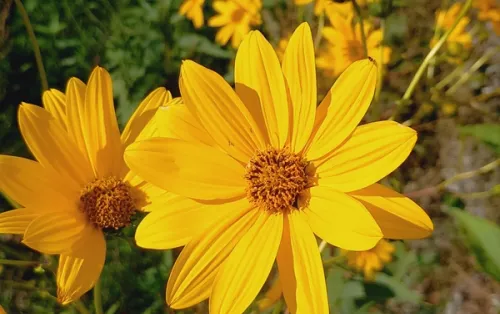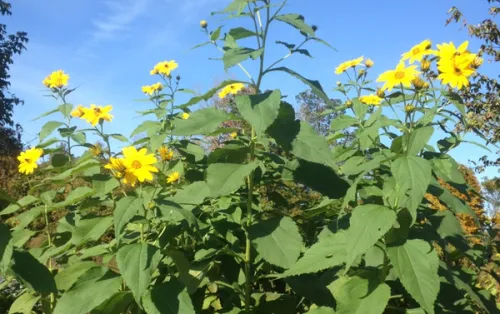Back to Glossary
Sunroot
Helianthus tuberosus
Sunroot is a perennial sunflower that also goes by the names Jerusalem Artichoke or Sunchoke. It greatly resembles the common annual sunflower, with large leaves and towering height, except that it produces multiple 3 inch flowers. Sunroot is a fantastic plant for wildlife, as its flowers, foliage and seeds feed a number of insects, birds, and mammals. Sunroot can be very aggressive and should be kept in check by digging up most (but not all) of the edible tubers in the fall. Additionally, consider planting it with other aggressive plants in a large garden bed or natural area, as it's not suitable for a smaller planting.
Details
Height36” - 120”
Spread36"
Bloom SeasonAugust – September
Soil Types
Clay
Loam
Sand
Soil Moisture
Dry
Medium
Moist
Sun Exposure
Part Sun
Full Sun
Range Map
Available
Not available
Ecological Benefits
Maintenance Tips
- Fall Special - To control spread, dig up and remove most of the underground tubers at the plant's base in late fall. The tubers are edible and can be cooked like potatoes.
- Mature plants respond well to the 'Chelsea Chop' to control overall height - trim stems roughly in half in early summer to reduce height and improve bushiness
- Can benefit from staking if stems become floppy





